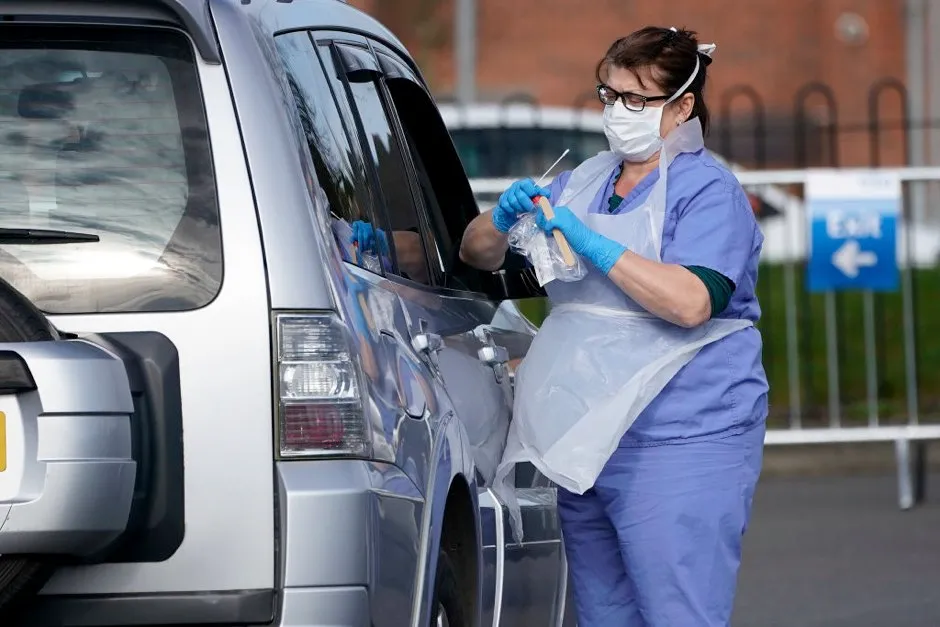- University of Oxford scientists develop rapid coronavirus test, which gives results in half an hour.
- Technology is 'very sensitive' which means infection may be identified sooner.
- Team now working on an integrated device that can be used at clinics, airports, and even in the home.
Researchers across the world are working on improving current coronavirus testing methods in hopes of yielding quicker results.
A team from the University of Oxford’s Engineering Science Department and the Oxford Suzhou Centre for Advanced Research (OSCAR) has developed a new COVID-19 test, based on a technique which is capable of giving results in half-an-hour.
They say this is much faster than those that are being widely used and does not require a complicated instrument.
Previous viral RNA tests – using a sample of tissue or blood or other fluid – took one-and-a-half to two hours to give a result.
The team, led by Professor Zhanfeng Cui and Professor Wei Huang, has been working to improve test capabilities as the virus spreads internationally.
Read the latest coronavirus news:
- Blood type A 'more vulnerable' to coronavirus
- Coronavirus vaccine: first volunteers receive trial dose in US
- Coronavirus: aggressive 'L type' strain affecting 70 per cent of cases
- Coronavirus: Is hand-washing really the best thing we can do to stop the spread of COVID-19?
Prof Huang said: “The beauty of this new test lies in the design of the viral detection that can specifically recognise SARS-CoV-2 (COVID-19) RNA and RNA fragments.
“The test has built-in checks to prevent false positives or negatives and the results have been highly accurate.”
Scientists say the technology is very sensitive which means patients in early stages of infection may be identified sooner, potentially helping to reduce the spread.
The technology requires a simple heat-block which maintains a constant temperature, and the results can be read by the naked eye.
Researchers say this makes it potentially useful in rural areas and community healthcare centres.

The technology has been used on real clinical samples at Shenzhen Luohu People’s Hospital in China.
The hospital applied the rapid detection kits on 16 clinical samples, including eight positives and eight negatives, which have been confirmed by the conventional methods and other clinical evidence.
All of the test results using the rapid detection kits were successful.
The Oxford scientists are now working to develop an integrated device so that the test can be used at clinics, airports, and even in the home.
How do viruses jump from animals to humans?
Every animal species hosts unique viruses that have specifically adapted to infect it. Over time, some of these have jumped to humans – these are known as ‘zoonotic’ viruses.
As our populations grow, we move into wilder areas, which brings us into more frequent contact with animals we don’t normally have contact with. Viruses can jump from animals to humans in the same way that they can pass between humans, through close contact with body fluids like mucus, blood, faeces or urine.
Because every virus has evolved to target a particular species, it’s rare for a virus to be able to jump to another species. When this does happen, it’s by chance, and it usually requires a large amount of contact with the virus.
Initially, the virus is usually not well-suited to the new host and doesn’t spread easily. Over time, however, it can evolve in the new host to produce variants that are better adapted.
When viruses jump to a new host, a process called zoonosis, they often cause more severe disease. This is because viruses and their initial hosts have evolved together, and so the species has had time to build up resistance. A new host species, on the other hand, might not have evolved the ability to tackle the virus. For example, when we come into contact with bats and their viruses, we may develop rabies or Ebola virus disease, while the bats themselves are less affected.
It’s likely that bats were the original source of three recently emerged coronaviruses: SARS-CoV (2003), MERS-CoV (2012) and SARS-CoV-2, the cause of the 2019-20 coronavirus outbreak. All of these jumped from bats to humans via an intermediate animal; in the case of SARS-CoV-2, this may have been pangolins, but more research is needed.
Read more:
